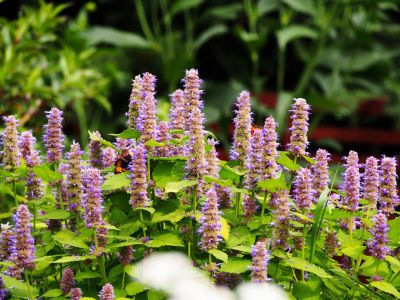Creating a Border for Native Gardens
When selecting native plants for edging, it’s best to choose those that are native to your particular region. Also, consider the plant’s natural habitat. For instance, a woodland fern won’t do well in an arid desert environment. A reputable local nursery that specializes in native plants can advise you. In the meantime, we have provided a few suggestions here for edging a native garden.
Lady fern (Athyrium filix-femina): Lady fern is native to the woodland areas of North America. The graceful fronds create a lush native plant border in partial to full shade. USDA plant hardiness zones 4 to 8.
Kinnikinnick (Arctostaphylos uva-ursi): Also known as common bearberry, a winter hardy plant found in the cooler, northern regions of North America. Pinkish white flowers show up in late spring and are followed by attractive red berries that provide food for songbirds. This plant is suitable for partial shade to full sun, zones 2 through 6.
California poppy (Eschscholzia californica): California poppy is native to the western United States, a sun-loving plant that blooms like crazy in summer. Although it is an annual, it reseeds itself generously. With its bright yellow orange blooms, it works beautifully as a native garden edging.
Calico aster (Symphyotrichichum lateriflorum): Also known as starved aster or white woodland aster, it is native to the eastern half of the United States. This plant, which thrives in either full sun or full shade, provides small blooms in autumn. Suitable in zones 3 through 9.
Anise hyssop (Agastache foeniculum): Anise hyssop shows off lance-shaped leaves and spikes of pretty lavender flowers in mid to late summer. This butterfly magnet is a beautiful native plant border in partial to full sunlight. Suitable for zones 3 to 10.
Downy yellow violet (Viola pubescens): Downy yellow violet is native to the shady woodlands of much of the eastern half of the United States. The violet blooms, which appear in spring, are an important source of nectar for early pollinators, zone 2 through 7.
Globe gilia (Gilia capitata): Also known as blue thimble flower or Queen Anne’s thimble, it is native to the West Coast. This easy-to-grow plant likes full sun or partial shade. Although globe gilia is an annual, it reseeds itself if conditions are right.
